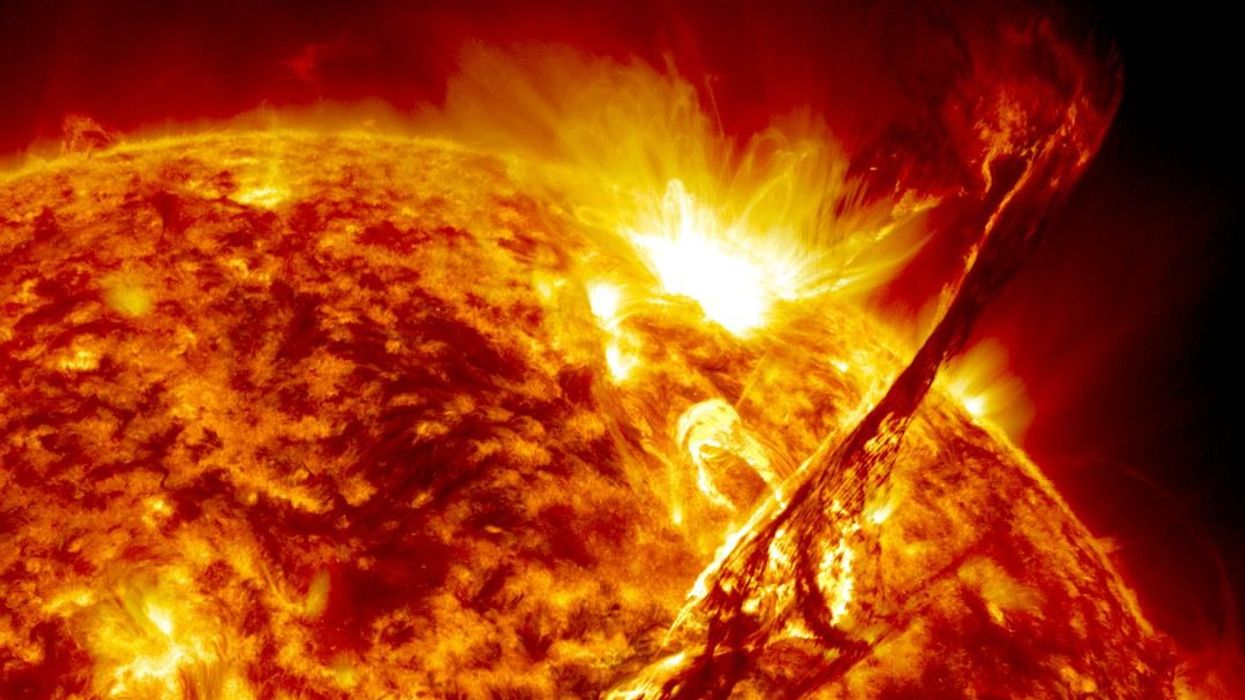Gregory Robinson
Nov 26, 2024
What If We Could Hear the Sun?
Underknown / VideoElephant
You should never directly look at the Sun because it could damage your eyes - everyone apart from Donald Trump seems to know that.
However we can now have a very in-depth look at the star at the centre of our solar system without the risk thanks to incredible new images.
Not only are the images breathtaking, they’re also the highest-resolution view of the Sun ever and you can see it in unprecedented detail.
The images were taken by Solar Orbiter, a European Space Agency mission supported by NASA. The spacecraft studies the Sun’s surface — also known as the photosphere — through its Polarimetric and Helioseismic Imager (PHI).

The photosphere is basically the visible surface of the 4.5 billion-year-old Sun, however the Sun’s surface is not solid like Earth’s. The surface has a 'grainy' appearance because of the bubbling plasma underneath the photosphere
The PHI studies what is commonly referred to as the Sun’s surface by snapping images and measuring the magnetic field and movement of the surface. The researchers also used the Extreme Ultraviolet Imager (EUI) instrument to take images of the Sun’s atmosphere. This is where the most dramatic activity takes place.
Because the Sun is so massive, multiple images must be taken and stitched together. The images were taken less than 74 million kilometers — or 46 million miles — away from the Sun on 22 March, 2023.
Each image is made up of 25 photographs.
- YouTubewww.youtube.com
Daniel Müller, Solar Orbiter's Project Scientist, said: "The Sun's magnetic field is key to understanding the dynamic nature of our home star from the smallest to the largest scales.
“These new high-resolution maps from Solar Orbiter's PHI instrument show the beauty of the Sun's surface magnetic field and flow in great detail. At the same time, they are crucial for inferring the magnetic field in the Sun's hot corona, which our EUI instrument is imaging.”

So what does the Sun actually look like? The PHI images show what may initially look like the inside of a very funky lava lamp. You can see the bubbling plasma and how it creates solar granules, which are convection cells that appear as a grainy pattern on the surface of the Sun.
Sunspots — the dark areas on the surface of the sun that are caused by strong magnetic fields — are also visible. These regions are a lot cooler than other parts of the photosphere which is why they look like holes.
You can zoom in even further by viewing the images here.
How to join the indy100's free WhatsApp channel
Sign up for our free Indy100 weekly newsletter
Have your say in our news democracy. Click the upvote icon at the top of the page to help raise this article through the indy100 rankings.
Top 100
The Conversation (0)













